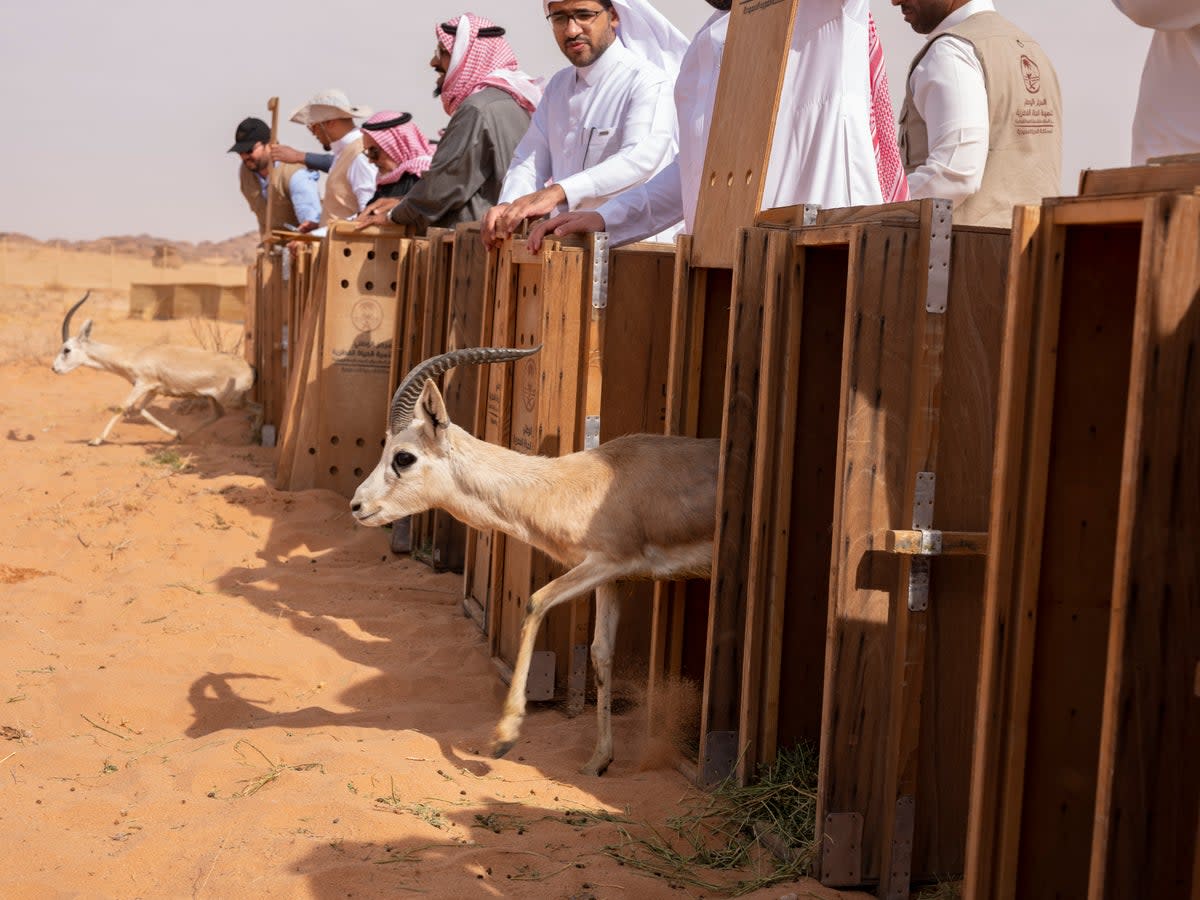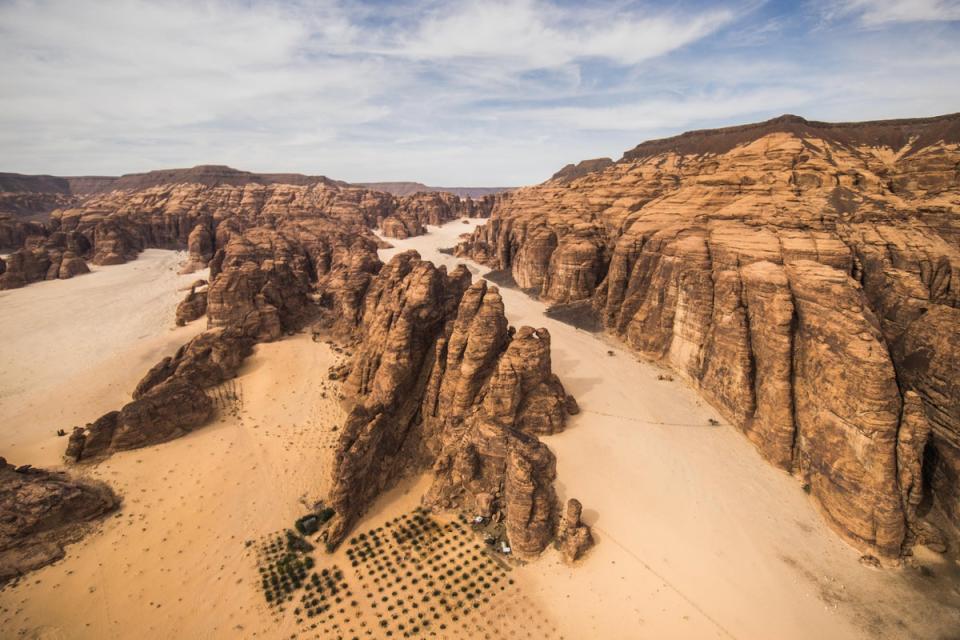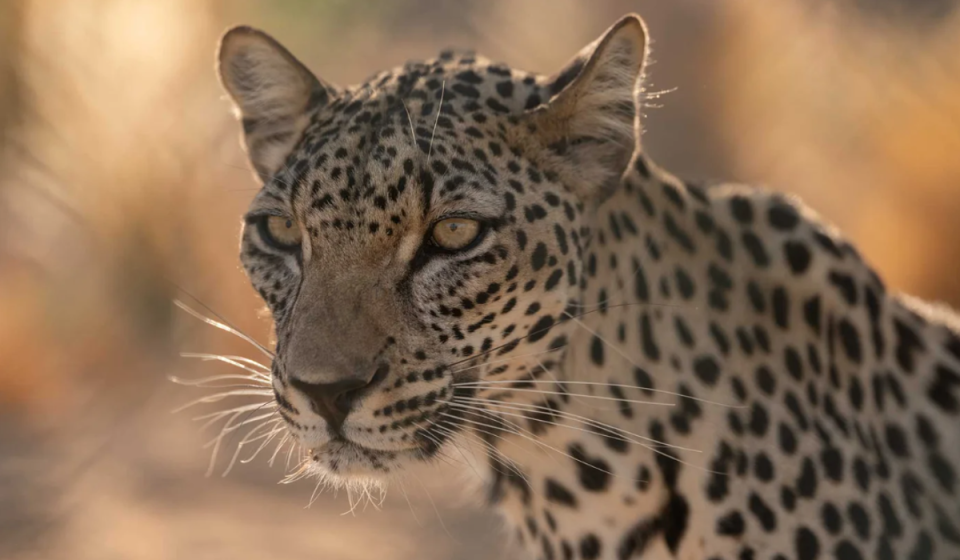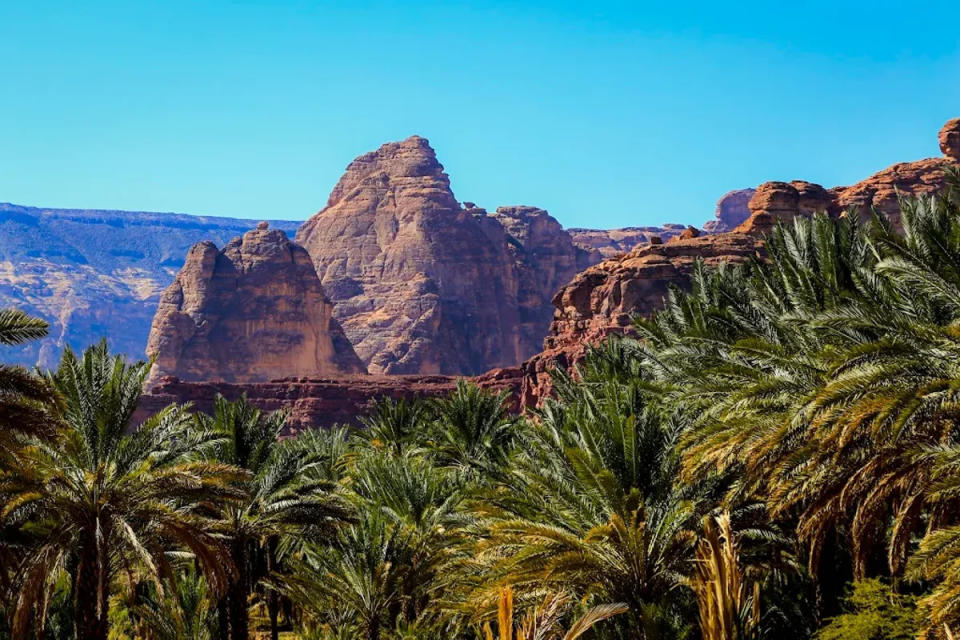The desert does bloom: rewilding AlUla

The UK’s leading advocate of rewilding calls it ‘one of the most inspired projects in the whole world’. We are talking about the extraordinary efforts to transform AlUla, an area of ancient desert and oasis in north-west Saudi Arabia.
Last month, delegates at the International Exhibition and Forum on Afforestation Technologies, held in Riyadh, heard just how ambitious the Royal Commission for AlUla (RCU) plan is. By 2030, 65,000 hectares of degraded land will be ‘rehabilitated’. To put that in context, that is exactly the same area of Outstanding Natural Beauty managed by our own National Trust.
You can call the process rehabilitating or rewilding, but neither word captures the unique nature of this project. The human population is as important to the regeneration narrative as the flora and fauna.

For thousands of years, people in AlUla lived in harmony with nature, and their return to this state will be the ultimate aim of the project. Then the 20th-century story of habitat loss and over-exploitation may come to be seen as an aberration, not an inevitable reality that occurs when too many people chase too few resources.
As the grasslands and trees return to the area’s nature reserves, native animals and birds will be reintroduced. They have already started with the ungulates such as the Arabian oryx. Ultimately, we could see the Arabian leopard – the most elusive, enigmatic and endangered species – return to lands in which it used to roam free.
It’s a hugely complex environmental challenge... a small army of scientists has been mobilised
In Sharaan, a protected wilderness area in AlUla, It’s very, very dry. And yet more than 20,000 native species of trees – mainly acacia – have been planted here, with another 20,000 going into the ground this year.
‘Here’ is some 700 kilometres north of Jeddah. The climate varies from 4C (and more) in summer to 5C (and sometimes lower) in winter. There is not much rain. But the desert does bloom; and when it does, it attracts nomadic herds.

Put aside images of caravanserai and lines of camels silhouetted against the dunes. Today’s nomads are city dwellers who drive convoys of huge trucks and thousands of goats. They descend on a fertile area, graze it to the bone, then move on.
The winds blow, the topsoils vanish, nutrients in the soil are washed into the wadis. You’re left with sand, which can heat up to 100C during the day, shrivelling root systems. The desert sprawls ever wider.
Over the past few years, farmers and horticulturalists have significantly improved the vegetation cover. Native grazing animals like Nubian ibex and idmi gazelles have been slowly reintroduced.

Now comes a new dawn for the desert. The vast resources, wealth and – just as important – the full political will of the Saudi Arabian state have been put behind a green initiative that will (among other things) see 10 billion trees planted across the country. In the wider Middle East, the target is another 40 billion trees.
It’s a hugely complex environmental challenge. In AlUla alone, a small army of international scientists, experts on soil, water management, endangered species and dozens more disciplines has been mobilised to bring the desert back to life.

Ben Goldsmith, one of the UK’s leading advocates for rewilding, says, “The Saudi plan to piece back together the terribly depleted and overgrazed ecosystem at AlUla is one of the most inspired projects in the whole world.”
He singles out AlUla because this is a place where that intense rewilding goes hand-in-hand with an equally ambitious plan to bring potentially millions of tourists to the region.
Plans for rewilding and tourism are not contradictory. They can work in harmony
There are plenty of reasons to visit. Those expanses of sand and desert tracks are only a part of a much more diverse whole. AlUla is the size of Belgium. The geology – volcanic mesas, sandstone towers, some of the world’s oldest metamorphic rocks – has led one visiting artist to compare it to a giant outdoor sculpture park.
But go back far enough – 8,000 years or more – and you might have seen our ancestors and the ancestors of our cattle grazing in green fields here. How do we know? Among the 27,000 archeological sites in AlUla, there are cave paintings of cattle dated to 7,000 BCE.

That was during the Holocene Humid period, when grasslands spread across northern Arabia and the Sahara. Then – 5,500 years ago – the climate shifted again, and with it the scorching, dry conditions we associate with Arabia today.
As for man-made climate change: according to the Max Planck Society, the Middle East is warming at twice the global average and by 2050 will be 4C warmer.
But AlUla was always an oasis, attracting nomads and grazers, dynasties and civilisations for millennia. It was settled by the Dadanites, an ancient race mentioned in the Old Testament. They succumbed to the Nabataeans from the northern kingdom of Petra, who in turn gave way to the Romans. They all left rock tombs, ancient cities, rock art, everyday utensils, luxury items and inscriptions in the stone.

It’s a human heritage that compares with Machu Picchu and the Valley of the Kings; and in the years to come, AlUla will unquestionably feature on the same bucket lists as those much more well-known sites.
Already, luxury resorts and spectacular modern buildings like the Maraya concert hall nestle in these ancient valleys, while the AlUla Old Town has been turned into a thriving hub, where art galleries, craft shops and restaurants already attract visitors from all over the region.

But these developments are designed not as impositions on the landscape, but part of it. After all, humans have always congregated in this land of valley and oasis. Just as the rock tombs of Nabatean Hegra are carved from the desert stone, so the glass-clad Maraya reflects the plain and the hills rather than competing with them.
Amr AlMadani, chief executive of the Royal Commission for AlUla, believes that not only are the two plans – rewilding and tourism – not contradictory: they actually work in harmony with one another.
Luxury resorts will attract visitors... but no one will be ‘wadi-bashing’ in convoys of 4x4s
“The basic business model for new, cultural and nature-inspired tourism is to take care of your nature”, he says. “If you give it enough, it gives back to you.”
Tourists will not be banished from the area. But the old kinds of desert activity associated with Middle East expats and visitors has no place here. No one will be ‘wadi-bashing’ in convoys of 4x4s. The model instead is of “low-impact, high-reward” safari tourism.
Rewilding on a wildly ambitious scale
By 2035, the Royal Commission for AlUla will have:
• Replanted hundreds of native plant species from 56 species of indigenous plants
• Produced 31 million seedlings in its plant nursery
• Planted 10 million trees in nature reserves across AlUla County
• Rehabilitating some 65,000 hectares of degraded land
• Adopted county-wide sustainable land management methods.
Already, more species are returning home to AlUla. Earlier this year 162 animals, including Arabian oryx, sand gazelles, idmi gazelles and Nubian ibex, were reintroduced. And more species are returning on their own.
Emma Gallacher, the project’s Conservation Initiatives Lead, says “Our camera trapping has revealed many species, including Arabian wolf, red fox, Blanford’s fox, Rock hyrax, Cape hare, North African wildcat, Arabian partridge, sand partridge and many more”.

Across AlUla’s five nature reserves, animals will roam and flourish, using wildlife corridors to move between protected areas in AlUla and beyond. Three of the reserves â The Wadi Nakhlah, Harrat AlZabin and Harrat Uwayrid â could also in time become home to new generations of Arabian Leopards.
Stephen Browne, AlUla’s Wildlife and Natural Heritage Executive Director, says that if all reserves under the Saudi Green Initiative and Vision 2030 in north-west Saudi Arabia were connected and managed collectively, they would represent one of the world’s largest terrestrial protected areas in the world.
The protected land now stretches for 12,500 square kilometres, with the ambition of covering 80-85 per cent of AlUla’s territory. To put that in context, the Serengeti has around 14,700.
Today’s grandchildren may grow up to see a greener desert and a very different Arabia
The local impact is already evident in Sharaan. Without the wadi-bashers, the trucks and the hoof prints from thousands of domesticated animals, that precious grass is returning.
“We were doing an animal release programme,” Browne recalls. “And these elders, 80-year-old sheikhs wandered off into the desert. They came back saying they’d seen grasses growing that they hadn’t seen since their grandparents’ generation.”
Today’s grandchildren may grow up to see a greener desert and a very different Arabia.
To find out more about AlUla or to book a trip, visit experiencealula.com


